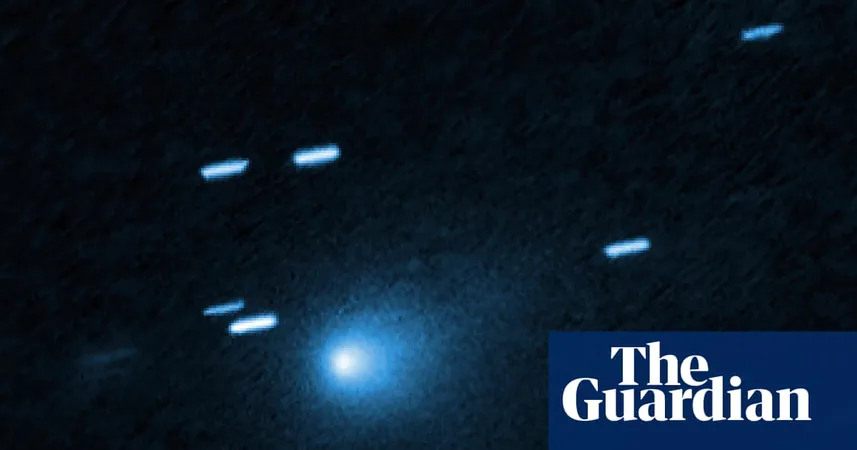
NASA Crushes Alien Comet Conspiracy: Here’s What You Need to Know!
2025-09-11
Author: Sophie
NASA Debunks Alien-Hypothesis on Interstellar Comet
Celestial excitement is brewing, but NASA has swiftly shot down claims about an interstellar object that some speculated could be a spacecraft from another civilization. Enter Harvard astronomer Avi Loeb, who stirred the pot with his theory about Comet 3I/ATLAS, suggesting it might be an artificial creation from a distant world.
3I/ATLAS, discovered on July 1 by the Asteroid Terrestrial-Impact Last Alert System telescope in Chile, is only the third known object to venture into our solar system from beyond its bounds. Loeb's controversial paper indicated that the comet’s peculiar trajectory and lack of a typical cometary tail could hint at a technologically advanced origin.
Is It a Comet... or Something More Sinister?
Loeb raised eyebrows further by claiming that if new observations show it lacks a typical tail, it could indicate that this object was intentionally sent toward the inner solar system, possibly carrying a hidden agenda.
He mused about the dire implications for humanity if this theory stands, suggesting that we might need to implement defensive measures—though he admitted they might be futile. But what do experts say?
NASA’s Response: No Need to Panic!
NASA scientists have been closely monitoring 3I/ATLAS and categorically state that this fiery visitor poses no threat to Earth. Tom Statler, NASA’s lead scientist for small solar system bodies, reassured the public, saying, "It looks like a comet. It does comet things. It very strongly resembles, in just about every way, the comets that we know."
Statler also highlights that all comets exhibit some unique behaviors, so unusual characteristics don't automatically signify alien technology. He pointed to imagery revealing that 3I/ATLAS is approximately 3.5 miles wide and hurtling through space at a staggering 130,000 mph.
What’s Next for 3I/ATLAS?
The comet will make close approaches to Mars, Jupiter, and Venus, but will never get closer than 170 million miles to Earth. Statler emphasized the significance of tracking these interstellar visitors, offering invaluable insights into the composition of other solar systems.
Loeb’s Playful Curiosity
While Loeb acknowledges that the simplest explanation is that 3I/ATLAS is just a comet, he encourages an attitude of curiosity and exploration. He proposes that we should keep questioning the norm instead of settling for conventional answers.
In a playful twist, he remarks, "Let us maintain our childhood curiosity and seek evidence rather than pretend to be the adults in the room that know the answers in advance." Loeb's hypotheses ignite spirited discussions, whether they hold water or not.
Stay tuned for more astronomical discoveries and debates as scientists continue to unravel the mysteries of our universe!









 Brasil (PT)
Brasil (PT)
 Canada (EN)
Canada (EN)
 Chile (ES)
Chile (ES)
 Česko (CS)
Česko (CS)
 대한민국 (KO)
대한민국 (KO)
 España (ES)
España (ES)
 France (FR)
France (FR)
 Hong Kong (EN)
Hong Kong (EN)
 Italia (IT)
Italia (IT)
 日本 (JA)
日本 (JA)
 Magyarország (HU)
Magyarország (HU)
 Norge (NO)
Norge (NO)
 Polska (PL)
Polska (PL)
 Schweiz (DE)
Schweiz (DE)
 Singapore (EN)
Singapore (EN)
 Sverige (SV)
Sverige (SV)
 Suomi (FI)
Suomi (FI)
 Türkiye (TR)
Türkiye (TR)
 الإمارات العربية المتحدة (AR)
الإمارات العربية المتحدة (AR)